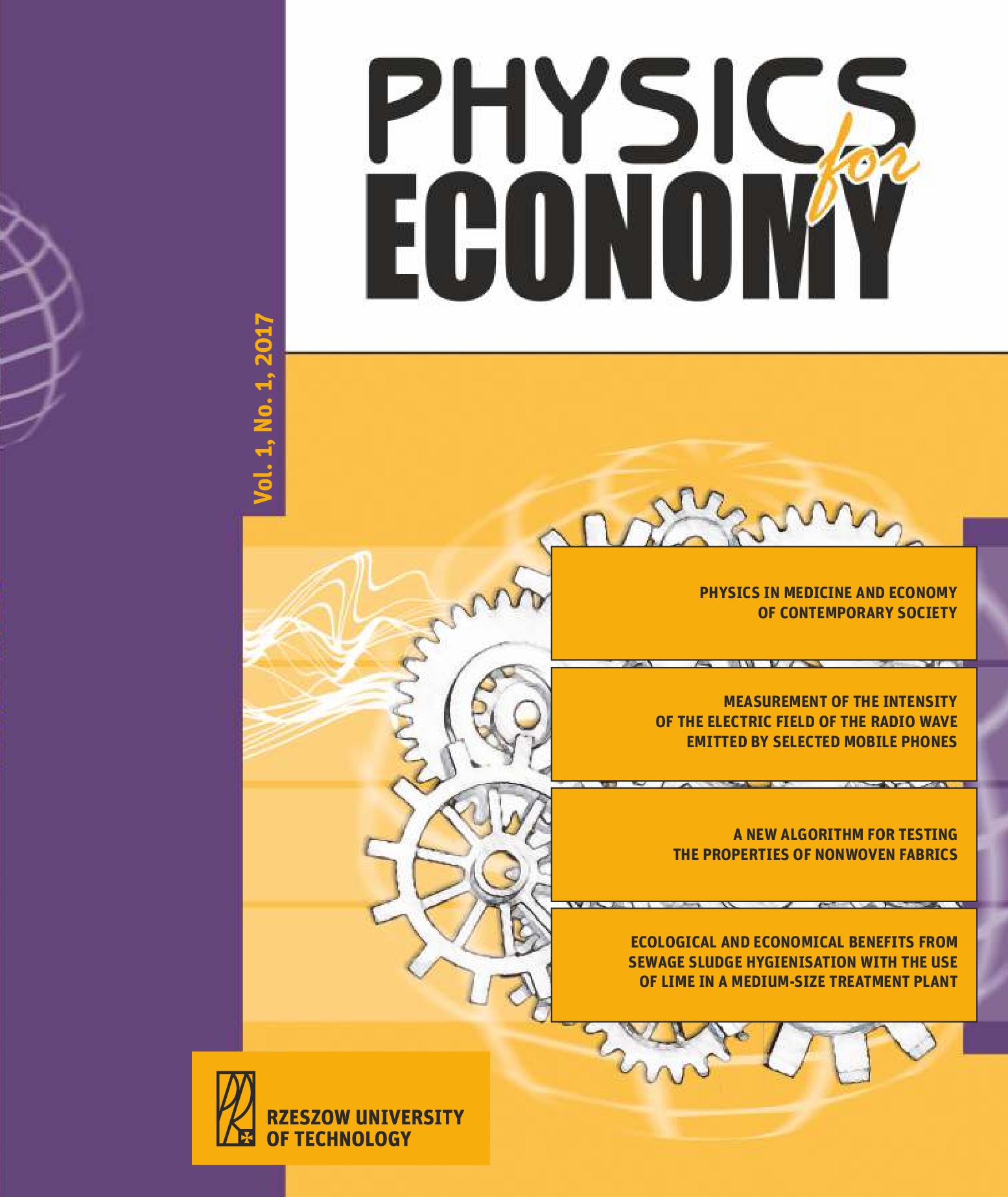Abstrakt
Przedstawiono nowy algorytm do badania porowatości włóknin. Algorytm zawiera przetwarzanie obrazu podświetlanej włókniny. Na obrazie są zaznaczone jasne obszary, co oznacza rozrzedzoną dystrybucję włókien. Ponieważ włókniny są używane między innymi jako materiały medyczne i filtracyjne, ich struktura ma znaczący wpływ na ich właściwości fizyczne. Zadaniem oprogramowania jest przede wszystkim określenie porowatości materiału.
Bibliografia
Keller J.P. et al., US Patent 3,755,527, 1973.
Świątek J., Jarzębowski J., Cichoń J., Investigation of Fibre Diameter Distribution in Non-Woven Textiles for Medical Applications in Melt-Blown Polyester Technology, FIBRES & TEXTILES in Eastern Europe, 2008, 16, 3, pp. 14-16.
Goetzendorf-Grabowska B., Królikowska H., Bąk P., Gadzinowski M., Brycki B., Szwajca A., Triclosan Encapsulated in Poli(L,L-lactide) as a Carrier of Antibacterial Properties of Textiles, FIBRES & TEXTILES in Eastern Europe, 2008, 16, 3, pp. 102-
-107.
Buczyłko K., Chwała C., Niekraszewicz A., Ciechańska D., Wagner A., Evaluation of the Effect of Anti-Mite Fabric on the Well-Being of Patients with a Mite Allergy, FIBRES & TEXTILES in Eastern Europe, 2008, 16, 4, pp. 121-125.
Ohshima Y., Nishino K., Yonekura Y., Kishimoto S., Wakabayashi S., Clinical Application of Chitin Non-Woven Fabric as Wound Dressing, European Journal of Plastic Surgery, 1987, 10, 2, pp. 66-69.
Whyte W., Hodgson R., Bailey P.V., Graham J., The reduction of bacteria in the operation room through the use of non-woven clothing, British Journal of Surgery, 1978, 65, 7, pp. 469-474.
Gümüşderelioğlu M., Türkoğlu H, Biomodification of non-woven polyester fabrics by insulin and RGD for use in serum-free cultivation of tissue cells, Biomaterials, 2002, 23, 19, pp. 3927-3935.
Song M.K., Kim Y.T., Cho J.Y., Cho B.W., Popov B.N., Rhee H.W., Composite polymer electrolytes reinforced by non-woven fabrics, Journal of Power Sources, 2004, 125, pp. 10-16.
Sakpal P.P., Landage S.M., Wasif A.I., Application of nonwovens for water filtration, International Journal of Advanced Research in Management and Social Sciences, 2013, 2, 2, pp. 28-47.
Grzybowska-Pietras J., Malkiewicz J., Influence of Technologic Parameters on Filtration Characteristics of Nonwoven Fabrics Obtained by Padding, FIBRES & TEXTILES in Eastern Europe, 2007, 15, 5-6, pp. 82-85.
Tuncer E., l’Abee R., Numerical modeling of non-woven fiber mats: Their effective mechanical and electrical properties, arXiv:1304.5513 [cond-mat.soft], (2013)
Hou X., Acar M., Silberschmidt V.V., Finite element simulation of low-density thermally bonded nonwoven materials: Effects of orientation distribution function and arrangement of bond points, Computational Materials Science, 2011, 50, 2, pp. 1292-1298.
Sabuncouglu B., Acar M., Silberschmidt V.V., A parametric finite element analysis method for low-density thermally bonded nonwovens, Computational Materials Science, 2012, 52, 1, pp. 164-170.
Demirci E., Acar M., Pourdeyhimi B., Silberschmidt V.V., Finite element modelling of thermally bonded bicomponent fibre nonwovens: Tensile behavior, Computational Materials Science, 2011, 50, 4, pp. 1286-1291.
Kang T.J., Kim C.H., Oh K.W., Automatic Recognition of Fabric Weave Patterns by Digital Image Analysis, Textile Research Journal, 1999, 69, 2, pp. 77-83.
Çay A., Vassiliadis S., Rangoussi M., On the use of image processing techniques for the estimation of the porosity of textile fabrics, Waset Org., 2005, 2, pp. 72-76.
Gong R.H., Newton A., Image-analysis Techniques Part II: The Measurement of Fibre Orientation in Nonwoven Fabrics, Journal of The Textile Institute, 1996, 87, 2, pp. 371-388.


